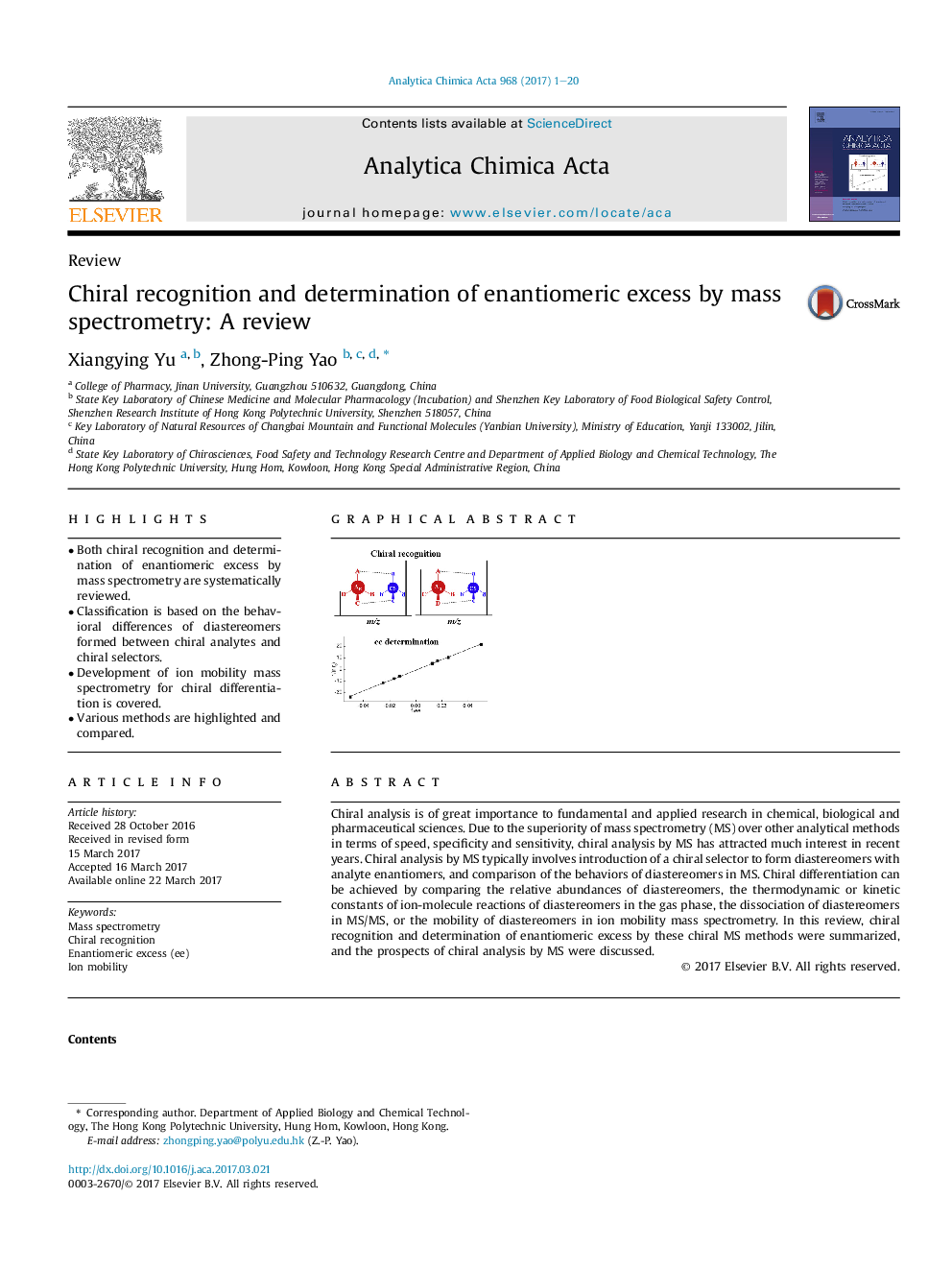| Article ID | Journal | Published Year | Pages | File Type |
|---|---|---|---|---|
| 5130884 | Analytica Chimica Acta | 2017 | 20 Pages |
â¢Both chiral recognition and determination of enantiomeric excess by mass spectrometry are systematically reviewed.â¢Classification is based on the behavioral differences of diastereomers formed between chiral analytes and chiral selectors.â¢Development of ion mobility mass spectrometry for chiral differentiation is covered.â¢Various methods are highlighted and compared.
Chiral analysis is of great importance to fundamental and applied research in chemical, biological and pharmaceutical sciences. Due to the superiority of mass spectrometry (MS) over other analytical methods in terms of speed, specificity and sensitivity, chiral analysis by MS has attracted much interest in recent years. Chiral analysis by MS typically involves introduction of a chiral selector to form diastereomers with analyte enantiomers, and comparison of the behaviors of diastereomers in MS. Chiral differentiation can be achieved by comparing the relative abundances of diastereomers, the thermodynamic or kinetic constants of ion-molecule reactions of diastereomers in the gas phase, the dissociation of diastereomers in MS/MS, or the mobility of diastereomers in ion mobility mass spectrometry. In this review, chiral recognition and determination of enantiomeric excess by these chiral MS methods were summarized, and the prospects of chiral analysis by MS were discussed.
Graphical abstractDownload high-res image (119KB)Download full-size image
